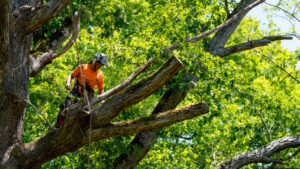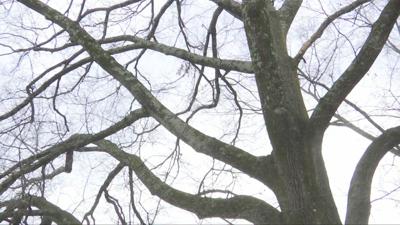Tree removal is a complex process that demands refined techniques, specialized equipment, and highly qualified arborists. It is not a DIY project, especially for trees that are too close to buildings or power lines.

Sometimes, a troublesome or dead tree needs to be removed to prevent damage and safety concerns. However, removing trees can be expensive.
Trees can bring beauty and value to your property, but they also pose a risk if they are unhealthy or dead. While it may be difficult to let go of a beloved tree, sometimes it is necessary for the safety of your family and visitors to your home. It is important to know the signs of a dying or dangerous tree and have it removed as soon as possible.
When deciding when to remove a tree, it is best to consult with an arborist or other professional. They can evaluate the condition of your trees and recommend steps to take to keep them healthy and safe. There are many factors that can determine whether or not a tree is a good candidate for removal, including the species of the tree, its location, and damage caused by storms or other events.
Choosing when to have a tree removed can be difficult, especially if you have an emotional attachment to it or have been avoiding maintenance. If a tree is dying or has become a safety hazard, however, it’s best to hire an expert to do the job so that it can be done correctly and quickly.
The most obvious sign that a tree is in danger of falling is when the trunk or branches show signs of decay. Other warning signs include cracks or damage that cover more than a quarter of the trunk, hollowness that extends more than 30% of the way into the tree, and a leaning trunk.
It’s also wise to remove a tree if it is growing too close to your house or other structures on your property, or if the roots are encroaching on sidewalks, driveways, or roads. Selective tree removal can help improve the health and appearance of your landscape by opening up space for other plants and preventing damage to your home or other structures in a storm.
When hiring a company to perform tree removal, it’s important to choose one that has experience and uses modern equipment. They should also be bonded and insured for your protection. Before starting the project, they should communicate with you about what to expect, including the cost. In addition, they will need to make preparations in your yard, such as clearing parking areas and removing any obstacles that could hinder their work.
Safety Measures
Tree removal is important for a number of reasons, from creating more space to improving property values. However, it is vital to take safety measures into account during this process. This includes securing the work area and wearing appropriate PPE. In addition, it is also important to have proper equipment and understand the physics of the job. Taking these precautions can help prevent accidents and injury during the process.
Before beginning the tree removal process, it is essential to inspect the tree and its surroundings. This will help identify any potential hazards and determine the best way to remove the tree. The inspection should include looking for cracks, splits and cankers. It is also important to check for any signs of rot or insect infestation. Finally, it is critical to look for any power lines near the tree. If a branch or metal tool comes in contact with a live wire, it could cause serious damage and potentially kill someone. It is therefore important to contact the power company before starting the work.
During the process of cutting down a tree, it is crucial to wear proper personal protective equipment (PPE) such as a hard hat, eye protection, ear protection, and gloves. In addition, it is advisable to work with a partner to increase safety and efficiency. A trusted partner can monitor the top of the tree for falling branches and provide assistance in case of an emergency.
Once the tree is removed, it is important to properly dispose of it. This can be done through chipping, which is a process that converts the wood into small chips that can be used for mulch or compost. Alternatively, the wood can be cut into logs and used for firewood.
It is also important to follow local regulations and ensure that all work is carried out in accordance with industry standards. Failure to do so may lead to fines or even criminal prosecution. In addition, if the tree is located on public property, it may require a permit or be subject to other legal restrictions.
Equipment
There is a lot of specialized equipment that tree service professionals use to stay safe and get the job done. They have the experience and training to know how each tool and piece of machinery will interact with the landscape and what the results are going to be.
There are some tools that are commonly used for both trimming and cutting down a tree, such as different types of chainsaws, pruning shears, and axes. Other equipment that is specifically needed for felling a tree include a crane, stump grinder and wood chipper. These are pieces of heavy machinery that can be dangerous, even for experienced pros. A crane requires a special license and insurance, which is an additional cost to the overall project.
Depending on the location of the property where the trees are being removed, there could be extra fees associated with travel and parking. In addition, if the tree is within close proximity to power lines or your home, it may be more expensive because of the risk of damage and/or fines.
The amount of debris that needs to be hauled away is another common added expense for the homeowner. This is especially true for properties that are very large or located in areas where it is difficult to access with a regular truck and dump trailer.
When a tree is cut down, it can leave a mess behind. A good way to help prevent this is for the homeowner to clear out the area where the tree was and move any breakable items to a different part of the yard or into storage. This will allow the tree removal crew to work more quickly and efficiently.
It is also important to have enough space for the tree removal company to park their vehicles and equipment. Typically they will bring a large truck and wood chipper, which will require more parking space than your standard car. It is helpful to have these spots arranged in advance so that they can easily access them.
Lastly, make sure the yard is free of anything that could be damaged by the heavy machinery during the tree cutting process. This includes lawn furniture, flower beds and garden areas. It is a good idea to move any pets or children away from the work area as well.
Insurance
Trees are an integral part of the beauty and character of many homes. They invite songbirds to nest in their branches, showcase vibrant foliage in the fall, and help protect the foundation of a home. When a tree falls on a house or another structure and causes damage, homeowners insurance typically covers the repair costs. But what happens if a homeowner wants to preemptively remove a dangerous tree before it has the chance to cause damage? The answer can vary depending on the circumstances and insurance policy.
Generally, home owners’ insurance will only cover the cost of removing a fallen tree if it is the result of wind, snow or rain and hits an insured structure like a house or fence. It will not cover the removal of a tree that is just unhealthy and posing no threat to the property, even if it is an eyesore or could pose a future risk. Some insurers will cap coverage at a certain dollar amount or on a per-tree basis, so it is important to review the specifics of your policy.
As a professional tree removal service, it’s essential to have the right business insurance to protect your investment. In addition to general liability insurance, consider getting commercial property insurance that covers your physical location and equipment. You should also get a workers’ compensation insurance policy to cover your employees in case they are hurt on the job.
If you are working on your neighbor’s property and a tree on their property falls, it is their responsibility to file an insurance claim against you if it damages their home. But if the tree does not hit anything and just blocks the driveway to their house or a ramp used by a handicapped person, you can often make a case that it is your obligation to remove the tree and they shouldn’t have to pay for it.
If you work on client’s properties and want to ensure you are covered, walk the property with your clients and mark which trees will be removed before beginning the job. This will prevent them from later claiming that a tree you removed was not supposed to be taken down or that you did not do enough to remove it.


